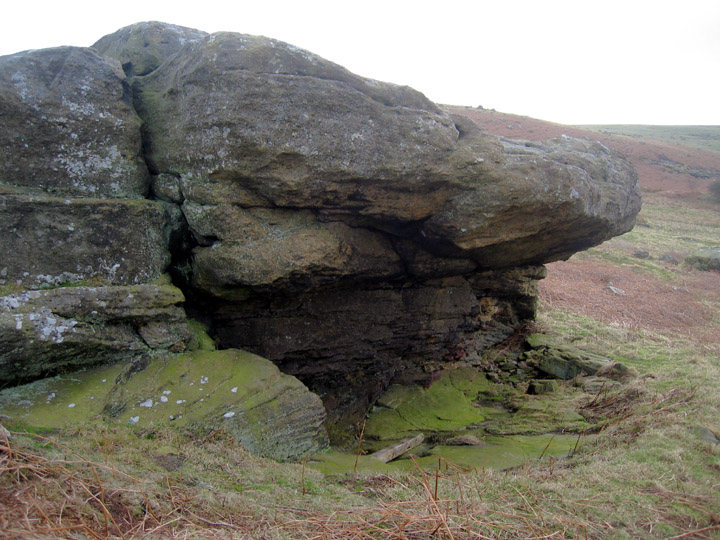
Whiteley(sic) Pike 4 of Beckensall Archive. Two motifs: a 50cm diameter basin draped over both vertical and horizontal faces to the left and a small 12 cm diameter circular feature with raised center on vertical face to the right. Natural geological feature or rock art?
















































